Fannie Mae 2009 Annual Report Download - page 16
Download and view the complete annual report
Please find page 16 of the 2009 Fannie Mae annual report below. You can navigate through the pages in the report by either clicking on the pages listed below, or by using the keyword search tool below to find specific information within the annual report.-
 1
1 -
 2
2 -
 3
3 -
 4
4 -
 5
5 -
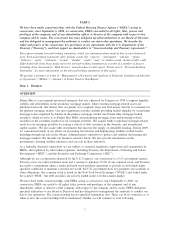 6
6 -
 7
7 -
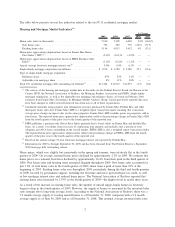 8
8 -
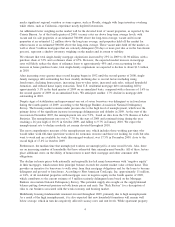 9
9 -
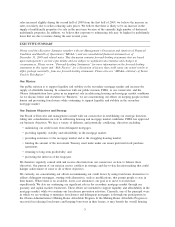 10
10 -
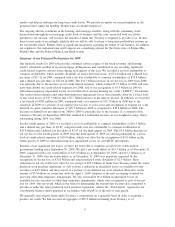 11
11 -
 12
12 -
 13
13 -
 14
14 -
 15
15 -
 16
16 -
 17
17 -
 18
18 -
 19
19 -
 20
20 -
 21
21 -
 22
22 -
 23
23 -
 24
24 -
 25
25 -
 26
26 -
 27
27 -
 28
28 -
 29
29 -
 30
30 -
 31
31 -
 32
32 -
 33
33 -
 34
34 -
 35
35 -
 36
36 -
 37
37 -
 38
38 -
 39
39 -
 40
40 -
 41
41 -
 42
42 -
 43
43 -
 44
44 -
 45
45 -
 46
46 -
 47
47 -
 48
48 -
 49
49 -
 50
50 -
 51
51 -
 52
52 -
 53
53 -
 54
54 -
 55
55 -
 56
56 -
 57
57 -
 58
58 -
 59
59 -
 60
60 -
 61
61 -
 62
62 -
 63
63 -
 64
64 -
 65
65 -
 66
66 -
 67
67 -
 68
68 -
 69
69 -
 70
70 -
 71
71 -
 72
72 -
 73
73 -
 74
74 -
 75
75 -
 76
76 -
 77
77 -
 78
78 -
 79
79 -
 80
80 -
 81
81 -
 82
82 -
 83
83 -
 84
84 -
 85
85 -
 86
86 -
 87
87 -
 88
88 -
 89
89 -
 90
90 -
 91
91 -
 92
92 -
 93
93 -
 94
94 -
 95
95 -
 96
96 -
 97
97 -
 98
98 -
 99
99 -
 100
100 -
 101
101 -
 102
102 -
 103
103 -
 104
104 -
 105
105 -
 106
106 -
 107
107 -
 108
108 -
 109
109 -
 110
110 -
 111
111 -
 112
112 -
 113
113 -
 114
114 -
 115
115 -
 116
116 -
 117
117 -
 118
118 -
 119
119 -
 120
120 -
 121
121 -
 122
122 -
 123
123 -
 124
124 -
 125
125 -
 126
126 -
 127
127 -
 128
128 -
 129
129 -
 130
130 -
 131
131 -
 132
132 -
 133
133 -
 134
134 -
 135
135 -
 136
136 -
 137
137 -
 138
138 -
 139
139 -
 140
140 -
 141
141 -
 142
142 -
 143
143 -
 144
144 -
 145
145 -
 146
146 -
 147
147 -
 148
148 -
 149
149 -
 150
150 -
 151
151 -
 152
152 -
 153
153 -
 154
154 -
 155
155 -
 156
156 -
 157
157 -
 158
158 -
 159
159 -
 160
160 -
 161
161 -
 162
162 -
 163
163 -
 164
164 -
 165
165 -
 166
166 -
 167
167 -
 168
168 -
 169
169 -
 170
170 -
 171
171 -
 172
172 -
 173
173 -
 174
174 -
 175
175 -
 176
176 -
 177
177 -
 178
178 -
 179
179 -
 180
180 -
 181
181 -
 182
182 -
 183
183 -
 184
184 -
 185
185 -
 186
186 -
 187
187 -
 188
188 -
 189
189 -
 190
190 -
 191
191 -
 192
192 -
 193
193 -
 194
194 -
 195
195 -
 196
196 -
 197
197 -
 198
198 -
 199
199 -
 200
200 -
 201
201 -
 202
202 -
 203
203 -
 204
204 -
 205
205 -
 206
206 -
 207
207 -
 208
208 -
 209
209 -
 210
210 -
 211
211 -
 212
212 -
 213
213 -
 214
214 -
 215
215 -
 216
216 -
 217
217 -
 218
218 -
 219
219 -
 220
220 -
 221
221 -
 222
222 -
 223
223 -
 224
224 -
 225
225 -
 226
226 -
 227
227 -
 228
228 -
 229
229 -
 230
230 -
 231
231 -
 232
232 -
 233
233 -
 234
234 -
 235
235 -
 236
236 -
 237
237 -
 238
238 -
 239
239 -
 240
240 -
 241
241 -
 242
242 -
 243
243 -
 244
244 -
 245
245 -
 246
246 -
 247
247 -
 248
248 -
 249
249 -
 250
250 -
 251
251 -
 252
252 -
 253
253 -
 254
254 -
 255
255 -
 256
256 -
 257
257 -
 258
258 -
 259
259 -
 260
260 -
 261
261 -
 262
262 -
 263
263 -
 264
264 -
 265
265 -
 266
266 -
 267
267 -
 268
268 -
 269
269 -
 270
270 -
 271
271 -
 272
272 -
 273
273 -
 274
274 -
 275
275 -
 276
276 -
 277
277 -
 278
278 -
 279
279 -
 280
280 -
 281
281 -
 282
282 -
 283
283 -
 284
284 -
 285
285 -
 286
286 -
 287
287 -
 288
288 -
 289
289 -
 290
290 -
 291
291 -
 292
292 -
 293
293 -
 294
294 -
 295
295 -
 296
296 -
 297
297 -
 298
298 -
 299
299 -
 300
300 -
 301
301 -
 302
302 -
 303
303 -
 304
304 -
 305
305 -
 306
306 -
 307
307 -
 308
308 -
 309
309 -
 310
310 -
 311
311 -
 312
312 -
 313
313 -
 314
314 -
 315
315 -
 316
316 -
 317
317 -
 318
318 -
 319
319 -
 320
320 -
 321
321 -
 322
322 -
 323
323 -
 324
324 -
 325
325 -
 326
326 -
 327
327 -
 328
328 -
 329
329 -
 330
330 -
 331
331 -
 332
332 -
 333
333 -
 334
334 -
 335
335 -
 336
336 -
 337
337 -
 338
338 -
 339
339 -
 340
340 -
 341
341 -
 342
342 -
 343
343 -
 344
344 -
 345
345 -
 346
346 -
 347
347 -
 348
348 -
 349
349 -
 350
350 -
 351
351 -
 352
352 -
 353
353 -
 354
354 -
 355
355 -
 356
356 -
 357
357 -
 358
358 -
 359
359 -
 360
360 -
 361
361 -
 362
362 -
 363
363 -
 364
364 -
 365
365 -
 366
366 -
 367
367 -
 368
368 -
 369
369 -
 370
370 -
 371
371 -
 372
372 -
 373
373 -
 374
374 -
 375
375 -
 376
376 -
 377
377 -
 378
378 -
 379
379 -
 380
380 -
 381
381 -
 382
382 -
 383
383 -
 384
384 -
 385
385 -
 386
386 -
 387
387 -
 388
388 -
 389
389 -
 390
390 -
 391
391 -
 392
392 -
 393
393 -
 394
394 -
 395
395
 |
 |
Table 1 does not include information about trial modifications under HAMP that have not yet become
permanent modifications or repayment and forbearance plans that have been initiated but not completed. As of
December 31, 2009, 291,053 of our loans were in trial modification periods under HAMP, as reported by
servicers to the system of record for the program.
Our single-family serious delinquency rate of 5.38% as of December 31, 2009 was more than double the rate
of 2.42% at the end of 2008. In addition, our seriously delinquent loan population aged significantly during
2009. The increase in delinquencies during 2009 was primarily driven by the duration and depth of the decline
in home prices and the rise in unemployment and underemployment among borrowers. These factors adversely
affected not only higher risk loan categories, but also loans traditionally considered to have a lower risk of
default, such as loans with lower original LTV ratios and higher FICO credit scores, fixed-rate mortgages and
loans past the peak default period of two to six years. Certain loan categories, however, continued to
contribute disproportionately to the increase in our nonperforming loans and credit losses in 2009. These
categories include: loans on properties in certain Midwest states, California, Florida, Arizona and Nevada;
loans originated in 2006 and 2007; and loans related to higher-risk product types, such as Alt-A loans. The
duration and depth of the decline in home prices and the rise in unemployment also contributed to the aging
of our seriously delinquent loan population. In addition, our foreclosure prevention efforts have, by design,
contributed to the rise in and aging of our delinquencies as we have delayed some foreclosure proceedings
until the borrower has been sufficiently considered for a home retention solution.
The decline in home prices has made it more difficult for delinquent borrowers to sell their homes and resolve
all their mortgage delinquencies. Approximately 14% of the loans in our guaranty book of business had
mark-to-market LTV ratios of 100% or greater at the end of 2009, compared with approximately 12% at the
end of 2008. As a result of the decline in home prices, our average credit loss severity, and average initial
charge-off per default, increased during 2009.
The substantial increase in our loss reserves at December 31, 2009 compared with the prior year was driven
by further deterioration of our credit book and reflects our estimate of the losses inherent in our guaranty book
of business as of the end of each period. Higher provisions for credit losses, through which we maintain
appropriate loss reserves, were the major driver of the $73.5 billion in credit-related expenses we recognized
in 2009, compared with the $29.8 billion we recognized in 2008. Our loss reserve coverage to total
nonperforming loans increased to 29.98% as of December 31, 2009, from 20.76% as of December 31, 2008.
We experienced a significant increase in our credit losses in 2009; however, the level of our credit losses was
substantially lower than our credit-related expenses, due in part to the delays in foreclosures (that is, charge-
offs) resulting from our home retention efforts, as well as new laws enacted in a number of states that
lengthen the time required to complete a foreclosure. Our credit losses totaled $13.6 billion in 2009, compared
with credit losses of $6.5 billion in 2008. Our credit-related expenses, which consist of our provision for credit
losses and our foreclosed property expense, are included in our consolidated statement of operations. Our
credit losses, by contrast, are not defined within GAAP and may not be calculated in the same manner as
similarly titled measures reported by other companies. We measure our credit losses as our charge-offs, net of
recoveries plus our foreclosed property expense, adjusted to eliminate the impact associated with our
HomeSaver Advance loans and our acquisition of credit-impaired loans from MBS trusts, in the manner
described in “MD&A—Consolidated Results of Operations—Credit-Related Expenses—Credit Loss
Performance Metrics.”
Although our combined loss reserves increased significantly in 2009 compared with 2008, we did not add to
our combined loss reserves in the fourth quarter of 2009. The slight decline in our loss reserves as of
December 31, 2009 compared with September 30, 2009 was due to a moderation in the pace at which loans
transitioned to seriously delinquent status and an improvement in our loss severities due to stabilizing home
prices as well as an increase in the number of loans acquired from our MBS trusts in order to complete
workouts for the loans. To the extent that the acquisition cost of these loans exceeded the estimated fair value,
we recorded a fair value loss charge-off against the “Reserve for guaranty losses.” Recognizing these fair
value losses, which typically meet or exceed the actual credit losses we ultimately realize, has the effect of
reducing the inherent losses that remain in our guaranty book of business, and consequently reduces our
11
